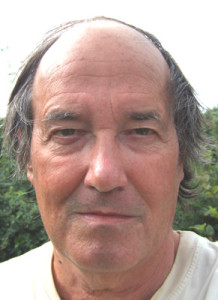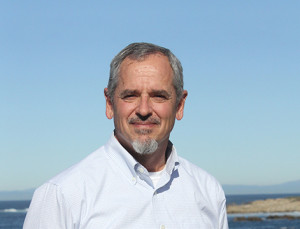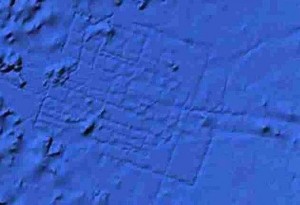catastrophism
Radlof, Johann Gottlieb
Johann Gottlieb Radlof (1777-1829) was a German linguist, who from 1818 to 1822 held a professorship at the University of Bonn and from 1823 to 1826 he taught at the University of Berlin. His later research led to an investigation of catastrophes in the solar system and their effects on the Earth.
Radlof’ supported his claim of cataclysmic celestial encounters with some material [1438] later employed by Immanuel Velikovsky over a century later. Some commentators have mentioned how Velikovsky seemed reluctant to credit earlier writers, such as W.C.Beaumont and Radlof(a), with their contributions to the development of the theory of planetary Catastrophism. Others, such as Clube & Napier offer a more generous attribution(b).
(a) http://www.mythopedia.info/radlof.htm
(b) Johann Gottlieb Radlof – Atlantisforschung.de (atlantisforschung-de.translate.goog)
Friedell, Egon
Egon Friedell (1878-1938) was an Austrian philosopher with a passion for the theatre, both as a playwright and cabaret performer. I have taken the following passage (a machine translation) from the Atlantisforschung.de(a) website to explain Friedell’s view of Atlantis.
“In the first chapter of this work (” Die Mar der Weltgeschichte “) Friedell makes no secret of his affinity to the catastrophic view of earth and human history, where he is a convinced follower of the today in essential statements largely consensual considered scientifically untenable world ice doctrine (WEL) of the Viennese engineer Hanns Hörbiger (1860-1931). His ideas of a history of humanity dating back to the geological depths and of periodic cataclysms due to serial “moon entrapments” and “falls” are taken over practically in toto. This also applies to the ideas of Hörbiger and his epigones in matters of Atlantis, which he summarizes in a section of the chapter titled ” Hörbigers Atlantis ” – which can now be retrieved online for free. In conclusion, although Egon Friedell was not involved in the further development of WEL after Hörbiger’s death (such as Hans Schindler Bellamy and Philipp Fauth), but contributed to their popularization.”
Unfortunately, Friedell was Jewish, although he had converted to Protestantism, so when, on March 16th, 1938 a few days after Austria had been incorporated into the German Third Reich, two SA men came looking for him, he chose suicide rather than arrest.
(a) https://atlantisforschung.de/index.php?title=Egon_Friedell (Ger)
Jensen, John M. Jnr.
John M. Jensen Jnr. is an independent researcher living in Florida, who has published two books on  ancient civilisations and catastrophism. He has explored in depth some of the subjects touched on here. His first book was Ancient Canal Builders(a), which explores the extensive ancient canal network on the Atlantic and Gulf coasts of the United States and Mexico. His second offering is Earth Epochs(b) in which he recounts pre-historic global catastrophes, including the Younger Dryas Event of 12,900 YBP, and what he calls the Last Great Cataclysm of 5,000 YBP and the Earth Axial Tilt of 3448 YBP.>In a separate paper he claims that the final catastrophe led to the breaching of the Gibraltar and calendar changes among other effects.<
ancient civilisations and catastrophism. He has explored in depth some of the subjects touched on here. His first book was Ancient Canal Builders(a), which explores the extensive ancient canal network on the Atlantic and Gulf coasts of the United States and Mexico. His second offering is Earth Epochs(b) in which he recounts pre-historic global catastrophes, including the Younger Dryas Event of 12,900 YBP, and what he calls the Last Great Cataclysm of 5,000 YBP and the Earth Axial Tilt of 3448 YBP.>In a separate paper he claims that the final catastrophe led to the breaching of the Gibraltar and calendar changes among other effects.<
However, he seemed to go off the rails when he proposed that humans and dinosaurs co-existed and that the many thousands of dolmens found around the globe were not tombs but places of refuge from carnivorous dinosaurs. No, I’m not making this up. He deals with the subject in greater detail in the well-illustrated Earth Epochs(d). Both of his books can be downloaded for free.(a)(b)
Jensen does mention Atlantis, but without dealing with the matter in any great detail, it seems to me that he does accept its reality. I do not agree with all his ideas but I think his work should be read, including his blogs(c).
>In 2018, Jensen offered a possible submerged urban site “located about 130 miles west of Homestead, FL in the Gulf of Mexico. It is in the middle of the Florida Continental Shelf. Based on Google Earth measurements, (setting Google Earth coordinates to the satnav position of this image) at the same elevation, then measuring the relative length and width of this image, renders a size of some 18 miles in width and some 14 miles in breadth. Making this metropolis at least the size of Miami proper, and likely larger.” He claims that this apparent metropolis must be more than 10,000 years old, based on the rate of sea level change following the last Ice Age. He offered a link to a paper about the feature on the academia.edu website, but this is no longer there(e).<
(a) https://www.academia.edu/3779666/Ancient_Canal_Builders_-_Overview
(b) https://www.smashwords.com/books/view/536932
(c) https://earthepochs.blogspot.ie/
(d) https://www.academia.edu/11703016/Earth_Epochs_Overview
(e) Earth Epochs (Sept.18, 2018) *
Fritzius, Robert
Robert S. (Bob) Fritzius is a retired electrical engineer. He is also a Velikovskian catastrophist and additionally is the author of a short article on his website apparently supporting the Atlantis opinions of Olof Rudbeck(a) with the comment that “I see no fault with his thesis, and so far, no contradiction with what is known of Swedish ancient history and Baltic geography.”
*(a) https://www.shadetreephysics.com/vel/atlantis.htm*
Combes, Michel-Alain
Dr Michel-Alain Combes (1942- ) is a French amateur astronomer with a PhD in astronomy from the Université Pierre et Marie Curie (Paris VI). For forty years he has studied impact catastrophism and published his views in his book, La Terre Bombardée (The Bombarded Earth). His extensive website(a) endeavours to combine history, myth and science and includes a reference to Atlantis, as well as a kind mention of this site. His book can also be read on his site (French).
Université Pierre et Marie Curie (Paris VI). For forty years he has studied impact catastrophism and published his views in his book, La Terre Bombardée (The Bombarded Earth). His extensive website(a) endeavours to combine history, myth and science and includes a reference to Atlantis, as well as a kind mention of this site. His book can also be read on his site (French).
Combes further claims that although the legends of Phaeton and Typhon are usually treated as referring to different events that they are records of the same encounter with a comet in the late 13th century BC(c). He further suggested that “Surt, Sekhmet, Typhon, Phaeton, Wormwood, Anat and others are the various names of the comet, seen under different skies, at a time when many civilizations were already well established and thriving.”
Combes delivered a paper in English(b) to a 2008 Conference in Paris entitled; The Apocalypse of the Year 10,000 BC – Myth or Reality? It has been proposed that this event may have created the Carolina Bays and destroyed Atlantis as proposed by Otto Muck.
Furthermore, it has also been linked to the onset of the mini ice age known as the Younger Dryas as described by Firestone, West and Warwick-Smith in their book The Cycle of Cosmic Catastrophes[0110].
In 1992, Asteroid ‘3446 ombes’ was named in his honour.
(a) http://www.astrosurf.com/macombes/index.html (French) *
(b) https://www.2008-paris-conference.org/mapage9/macombes-younger-dryas-event-1-xx.html.pdf
Jaye, Michael *
Michael Jaye is an Associate professor at the Naval Postgraduate School, in Monterey, California. He is a  confirmed catastrophist focused on cometary impacts. In a lecture to the Geological Society of America in 2011(a) he describes two major events in the Earth’s history that had profound effects on the earth and life on it. The first was a double impact 65 million years ago and is generally accepted to have led to the demise of the dinosaurs and the second 460,000 years ago.
confirmed catastrophist focused on cometary impacts. In a lecture to the Geological Society of America in 2011(a) he describes two major events in the Earth’s history that had profound effects on the earth and life on it. The first was a double impact 65 million years ago and is generally accepted to have led to the demise of the dinosaurs and the second 460,000 years ago.
In an April 2015 lecture entitled Resolving the Problem of Atlantis, he expands on his original ideas(b) introducing a third event 13,000 years ago when another cometary impact brought an enormous amount of water to earth, which linked together previously disconnected seas and oceans.
At this point, he introduces Atlantis or more correctly the alleged Google image of Atlantis in the Atlantic Ocean that Jaye now claims was the Plain of Atlantis. As I have previously stated, the image in question shows lines that would have been kilometres in width and could not have been streets and so are also too wide to have been the irrigation ditches described by Plato. The U.S. National Oceanic and Atmospheric Administration has also debunked the silly Atlantis claims generated by these images(e). However, the problem remains, that some people believe what they want to believe not what can be demonstrated.
shows lines that would have been kilometres in width and could not have been streets and so are also too wide to have been the irrigation ditches described by Plato. The U.S. National Oceanic and Atmospheric Administration has also debunked the silly Atlantis claims generated by these images(e). However, the problem remains, that some people believe what they want to believe not what can be demonstrated.
Jaye does not accept the explanation for these anomalous lines given by Google, joining conspiracy theorists in the process. I personally think that he should stick to geology and leave the subject of Atlantis to others.
Jaye has also given me a link(c) to a video of one of his lectures. In it, one of his claims is that most of the Earth’s water is the result of a collision with an icy comet around 12,800 years ago. However, the widespread distribution of fossil fish far exceeds the areas occupied by original unconnected bodies of water suggested by Jaye. This is just one of many inaccuracies offered by him. His ideas can be read on Graham Hancock’s website(d) and in his slender 2017 66-page book, The Worldwide Flood [1549].
Jaye has failed to explain how his claim of a relatively recent acquisition by the Earth of most of its water, can account for the recurring Ice Ages that our planet has endured over many millions of years. Ice Age theory is well established, but according to him, the Earth would not have had enough water over that timespan to produce the glaciers that enveloped large areas of the globe, sometimes to a depth of 3 or 4 km, leading to the measurable isostatic rebound we still experience today. Where I’m sitting right now had a glacier of around a kilometre thick over it during the last Ice Age!
Jaye also published a paper entitled Mu and the Worldwide Flood, in which he found some support for the late Flood theory.(g)
Carl Feagans, an ardent sceptic, has published a lengthy refutation of Jaye’s theories, in particular his idea of a global flood.(f)
(b) The Explorers Club – Events – NYC – Public Lecture Series feat. Michael Jaye (archive.org)
(c) https://vimeo.com/126026401
(d) https://grahamhancock.com/jayem2/
(e) https://oceanservice.noaa.gov/facts/atlantis.html
(f) https://ahotcupofjoe.net/2019/11/the-pseudoarchaeology-of-michael-jayes-worldwide-flood/
(g) Mu and the Worldwide Flood | My-Mu.com Guest Blog (archive.org) *
Pilgram, Wilhelm
 Wilhelm Pilgram (1934- ) is a German doctor of medicine by profession, but he is also a keen student of catastrophism. This led him to follow the views of the Tollmanns and consequently he supports the idea of Atlantis situated on the Mid Atlantic Ridge and destroyed around 10,000 years ago by the impact of a comet(a).
Wilhelm Pilgram (1934- ) is a German doctor of medicine by profession, but he is also a keen student of catastrophism. This led him to follow the views of the Tollmanns and consequently he supports the idea of Atlantis situated on the Mid Atlantic Ridge and destroyed around 10,000 years ago by the impact of a comet(a).
(a) https://atlantisforschung.de/index.php?title=Dr._Wilhelm_Pilgram
Palmer, Trevor
Trevor Palmer (1944- ) is an English Professor of Biology now living in Scotland. Apart from his day job of enzymology and the study of genetic  disorders, which led to an interest in evolution, which in turn brought him to research catastrophism, he has written several books on these subjects, including >Controversy Catastrophism and Evolution [1971]<Perilous Planet Earth [888], which places today’s “concern about the threat to Earth from asteroids and comets within a historical context.” He devotes two chapters of this comprehensive work to the subject of Atlantis, in which he reviews (chap.13) some of the late 19th and early 20th century theories as well as more recent developments (chap.28) exposing many of the weaknesses in the arguments on offer.
disorders, which led to an interest in evolution, which in turn brought him to research catastrophism, he has written several books on these subjects, including >Controversy Catastrophism and Evolution [1971]<Perilous Planet Earth [888], which places today’s “concern about the threat to Earth from asteroids and comets within a historical context.” He devotes two chapters of this comprehensive work to the subject of Atlantis, in which he reviews (chap.13) some of the late 19th and early 20th century theories as well as more recent developments (chap.28) exposing many of the weaknesses in the arguments on offer.
>A lecture with the same title as the book was delivered to the Society for Interdisciplinary Studies (SIS) in September 2004 and is now available online(m).<
While Palmer does not express any personal views on the subject, it is noteworthy that he wrote an introduction to the 2005 Barnes & Noble edition of Lewis Spence’s The History of Atlantis. After a brief look at Spence’s life, Palmer gives an overview of the principal strands of Atlantology today and concluded that many of the issues debated 80 years ago are still unresolved and for that reason, Spence’s book continues to be worth studying.
Palmer wrote a short paper(a) in 1987 in which he was cautiously sceptical of the Atlantis story, particularly the possibility that it was destroyed during the Late Pleistocene era, with which I concur. He also touched on the subject of the Carolina Bays, apparently adding support to the now-discredited idea that they were created by wind action. I expect that he may have modified his views by now. However, the US Geological Survey is now (2021) identifying the bays as ‘relict thermokarst lakes’.(h)
Palmer presented a paper entitled Catastrophes: The Diluvial Evidence at the Society for Interdisciplinary Studies (SIS) Silver Jubilee Conference in September 1999.(i) He also addressed the SIS in 2004 on the background to his book published the previous year(d).
Palmer published two similar papers in 2010(b) and 2012(e) on the history of catastrophism and the ensuing debates from the time of Velikovsky until the present, when catastrophism has greater acceptance and which now offers a variety of competing ideas regarding the number, source, date and consequences of specific catastrophes.
In the second paper delivered to the Quantavolution Conference on Naxos, he offers the interesting observation that “In science, unlike religion, the great revelations lie in the future; the coming generations are the authorities, and the pupil is greater than the master if he has the gift to see things anew.”
Palmer has also written a 2018 review(c) of Perilous Planet Earth in light of developments since it was first published.
In 2009, Palmer published an interesting paper on the Black Sea and its dramatic connection with the Mediterranean (9,400 years ago) and how it may have influenced the creation of flood myths in the region(l). “The various groups currently investigating the area are agreed that cataclysmic flooding took place during the Late Pleistocene, but remain divided about whether similar floods also occurred during the Holocene. Eye-witness accounts of catastrophic floods in the Black Sea basin at either time could have been passed on to future generations, eventually giving rise to the later Mesopotamian legend of Uta-napishtim and, subsequently, the Biblical story of Noah. However, in the absence of any direct evidence of cultural transmission, that can presently only be regarded as plausible speculation.”
Palmer and Gunnar Heinsohn have been debating Heinsohn’s claim that our chronology of the 1st millennium AD is deeply flawed, on the Q-Mag website(f). Palmer has also written a lengthy paper supporting his views on the matter(g).
In addition, Palmer has also examined the ancient Greek and Roman historians “to test whether they present a picture of the past consistent with that revealed by archaeology, particularly inscriptions indicating sequences and timescales, and also to see the extent to which they support, or otherwise, the orthodox chronology and a number of representative alternative chronologies.” He concluded that there was ‘general accuracy’(j). He subsequently expanded on this paper to include a review of the chronology of the 1st millennium AD(k).
(a) See Archive 3026
(c) Archive 4971 | (atlantipedia.ie)
(d)Archive 4972 | (atlantipedia.ie)
(e) Archive 4973 | (atlantipedia.ie)
(f) https://www.q-mag.org/_search.html?req=Trevor+Palmer
(g) https://www.academia.edu/37544096/Writers_and_Re_Writers_of_First_Millennium_History_Second_draft_October_2018_
(h) https://earthobservatory.nasa.gov/images/147904/ice-age-carolinas
Society for Interdisciplinary Studies
The Society for Interdisciplinary Studies (SIS) was founded in 1974 to promote discussion and further study of the ideas of Immanuel Velikovsky. He was one of the first to publicise the fact that the ancient chronology of Egypt was, and according to some, still is badly wrong. SIS is “the oldest and most up-to-date Society for information and research into cosmic catastrophes and ancient chronology revision.”
For its Jubilee Conference in 1999, P. John Crowe delivered a lengthy paper(e) on the various attempts to revise ancient chronology, before and after Velikovsky.
Trevor Palmer who was Chairman of the SIS from 1995-1998 and 2000-2002 has written Perilous Planet Earth[888], which is a comprehensive history of catastrophism and includes a couple of chapters on Atlantis.
In 1997, the SIS organised a conference entitled Natural Catastrophes During Bronze Age Civilisations: Archaeological, geological, astronomical and cultural perspectives. The background to the conference is worth a read.(c)
A search on their website(a) reveals a number of articles and reviews relating to Atlantis – not all positive. Their Catastrophism CD(b), although expensive, is an absolute must for any serious student of the subject.
S.I.S. has also compiled a valuable collection of web resources on its website(d).
(a) https://www.sis-group.org.uk/
(b) Publications | Society for Interdisciplinary Studies (archive.org) *
(d) Resources | Society for Interdisciplinary Studies (archive.org) * (2022)
Saturn Theory
The Saturn Theory(b) suggests a radical revision of our understanding of the recent history of our solar system. It involves the re-positioning of Saturn, Venus, Earth and Mars and that this complex celestial choreography was recorded in the mythologies of the ancient world. There are several competing models of the theory, one has Earth as a satellite of Saturn, while another has our planet at least closer to Saturn.
The late Amy Acheson (1946-2005) suggested that a vindicated Saturn Theory will demonstrate that “Atlantis was not an earthly location” but was a celestial “variation of the mythical home of the gods” (a).
Ev Cochrane has written an overview of the Saturn Theory(e). Some of the theory’s variants can also be read on the Velikovsky Encyclopedia website(f), which is appropriate given that it was inspired by Velikovsky’s cosmology.
David N. Talbott was a keen supporter of Velikovsky’s ideas regarding Saturn’s earlier pre-eminence as a planetary god and wrote The Saturn Myth in support of this contention. This book is now available online(g).
Although I am a supporter of catastrophism I find it hard to accept any of the Saturn Theory’s variants. I am also a convinced euhemerist and believe that myths often contain cores of historical reality. Unfortunately, myths can be notoriously ambiguous and consequently where they record remarkable sights in the sky what is interpreted as a close encounter by one person can with equal conviction be seen as an approaching comet by another.
For me, the clincher is that the previous arrangement of the solar system, posited by the Saturn Theory, would conflict with the relative harmony of Bode’s Law, even if we do not understand its underlying principles. A 1974 paper(c) by Oreste and Margaret Lombardi compared Bode’s Law with the Fibonacci Sequence and the Golden Mean when applied to our solar system. The authors concluded, “that there is some underlying law involving gravitation and the golden mean that determines both aphelion and apogee distances.” With respect to some underlying gravitational principle, R. Louise, the French astronomer, remarked(d): “that satellite systems mimic the planetary system suggests some possible unsuspected property of gravitation.”
For my part, I have always felt that Bode’s Law was a highly convincing concept, but, unfortunately, I do not have the mathematical or astronomical ability required to objectively verify its reality, nor the proposed Fibonacci Sequence and the Golden Mean relationship with it. It would appear that acceptance of Bode would create difficulties not just for the Saturn Theory but also for Velikovsky’s idea that Venus was just a large piece of ejecta from Jupiter that had catastrophic close encounters with Earth and Mars, within human experience, just a few thousand years ago. Such an idea would mean that before the Saturnian rearrangement of the planets or the Velikovskian creation of Venus, the positional relationship of the planets probably did not conform to any known mathematical model but after this/these calamitous events everything ‘coincidentally’ settled into orbits that are now claimed to conform to Bode, Fibonacci and the Golden Mean! All this is a coincidence too far.
(a) Wayback Machine (archive.org) *
(b) Untitled (jordanmaxwell.com)
(c) www.fq.math.ca/Scanned/22-1/lombardi.pdf
(d) http://articles.adsabs.harvard.edu/full/1982M%26P….26…93L
(e) https://en.calameo.com/read/0001935746e15f2e63d87
